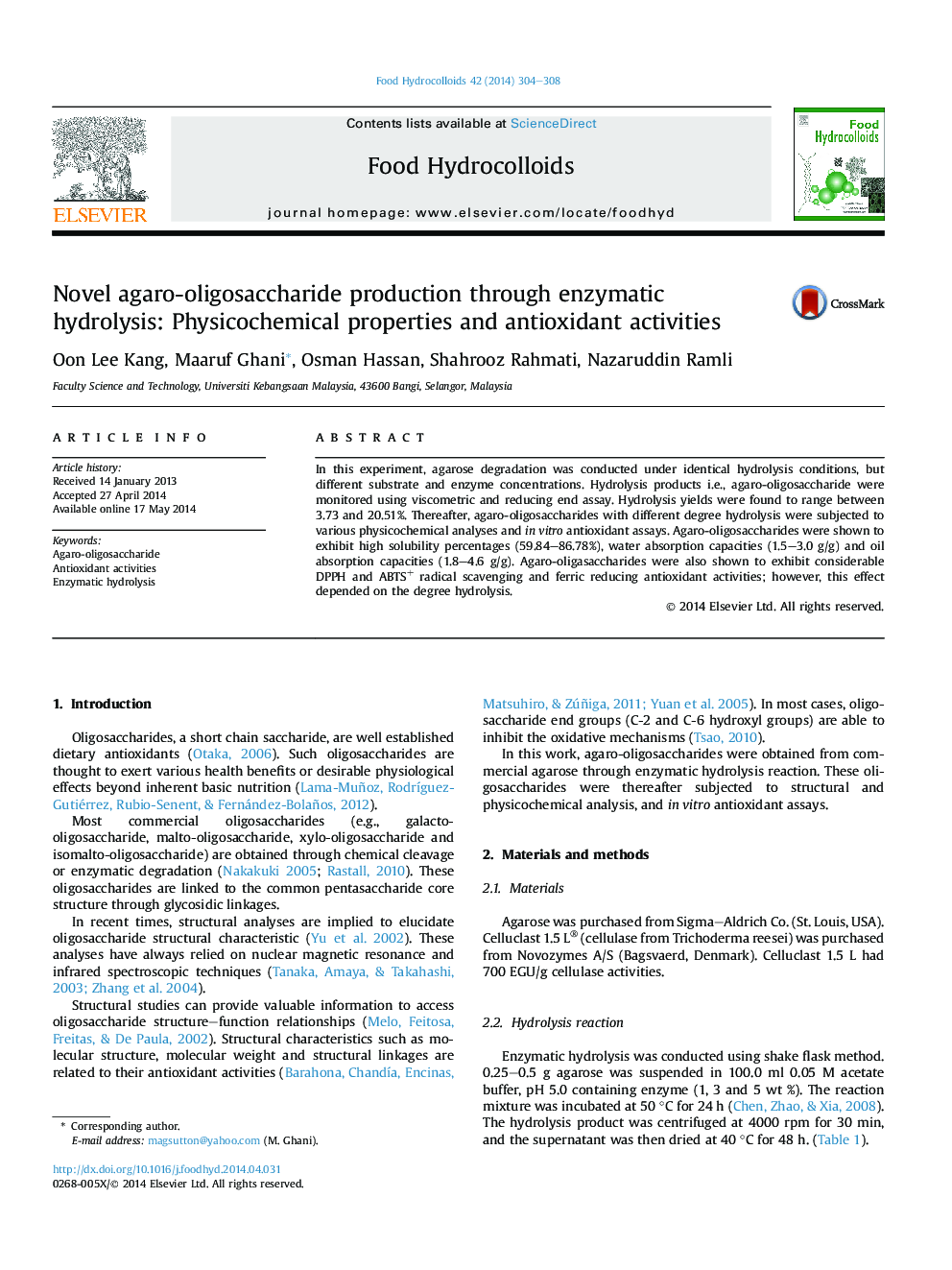| Article ID | Journal | Published Year | Pages | File Type |
|---|---|---|---|---|
| 603871 | Food Hydrocolloids | 2014 | 5 Pages |
•Celluclast 1.5 L® could catalyze agarose degradation.•Enzymatic hydrolysis could give rise to high soluble agaro-oligosaccharides.•Enzymatic hydrolysis could have synergistic effects on antioxidant activities.•Enzymatic hydrolysis could give rise to high soluble agaro-oligosaccharides.
In this experiment, agarose degradation was conducted under identical hydrolysis conditions, but different substrate and enzyme concentrations. Hydrolysis products i.e., agaro-oligosaccharide were monitored using viscometric and reducing end assay. Hydrolysis yields were found to range between 3.73 and 20.51%. Thereafter, agaro-oligosaccharides with different degree hydrolysis were subjected to various physicochemical analyses and in vitro antioxidant assays. Agaro-oligosaccharides were shown to exhibit high solubility percentages (59.84–86.78%), water absorption capacities (1.5–3.0 g/g) and oil absorption capacities (1.8–4.6 g/g). Agaro-oligasaccharides were also shown to exhibit considerable DPPH and ABTS+ radical scavenging and ferric reducing antioxidant activities; however, this effect depended on the degree hydrolysis.
Graphical abstractFigure optionsDownload full-size imageDownload as PowerPoint slide
